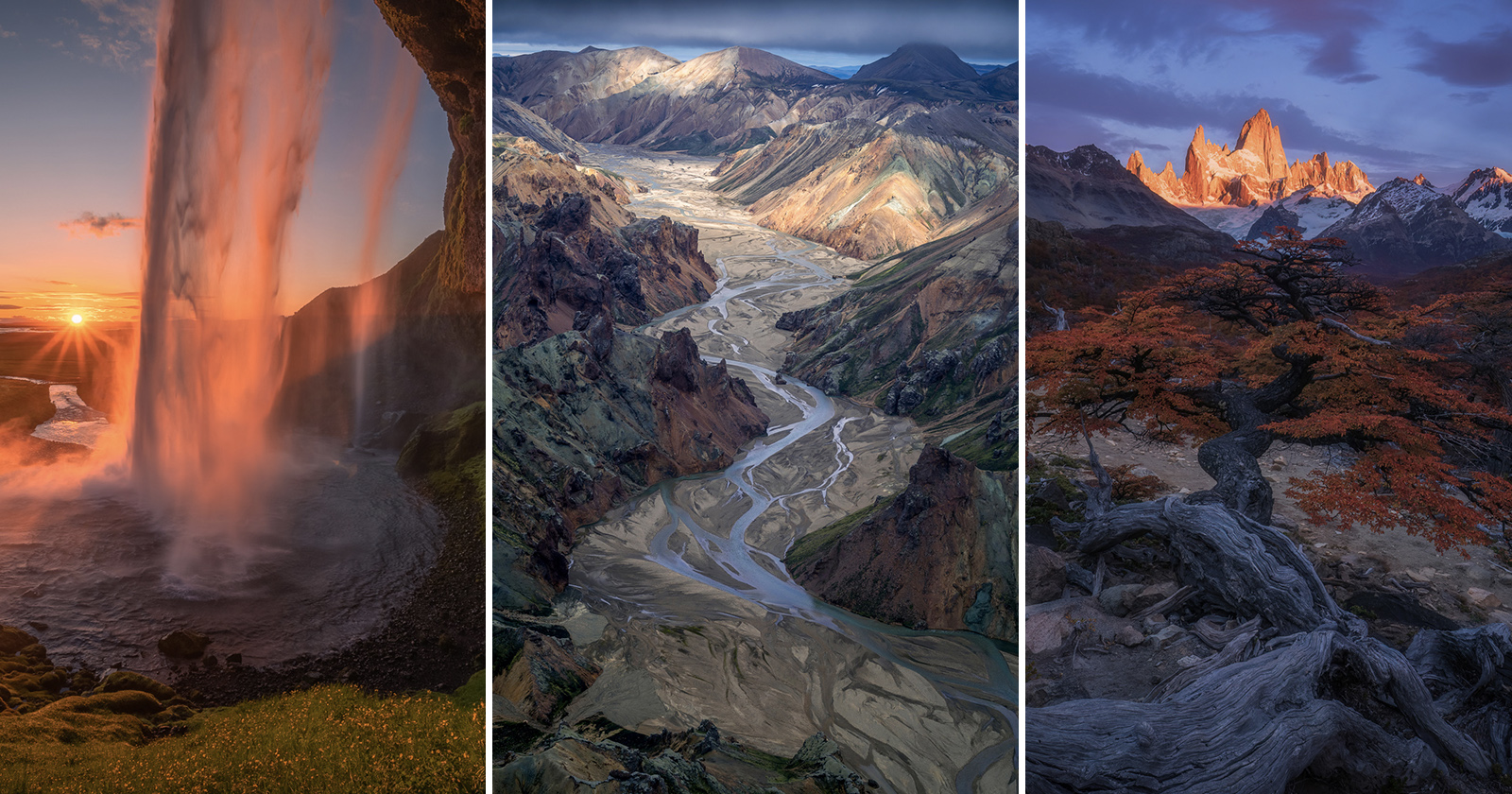Copyright PetaPixel

Professional landscape photographer Robert Bilos turned his passion for nature and the great outdoors into his career. He explains how his creative philosophy, techniques, and love of the outdoors inform each one of his breathtaking photos. Robert Bilos’ journey into photography began with his profound love for nature, particularly the mountains. “Without my love for nature, especially mountains I would never be a photographer,” he explains. A professional landscape photographer living in Langen, near Frankfurt, Germany, Bilos began taking landscape photos in 2016, drawn to the physical and emotional benefits of exploring the outdoors. For Bilos, photography is a way to see the world anew, whether it is discovering hidden beauty in familiar surroundings or venturing into remote landscapes. “I started taking landscape photos in a year 2016. Why landscape photography? Well, I realized that they are good for me physically, mentally and emotionally. Sometimes this means discovering places right in front of your eyes that you just never noticed were beautiful before. Other times this means exploring new places and getting out on a hike or nature walk. Photography helps me to see the world in new way,” Bilos says. From the beginning, he immersed himself in learning everything about photography. Tutorials, magazines, videos, social media, and books became part of his daily routine. He recalls the thrill of long excursions, often sleeping only a few hours a night, driven by the anticipation of capturing the perfect light. “I got hooked on everything about photography, tutorials, magazines, videos, social media, books, you name it, if it was about photography I was consuming it. I began taking longer and longer trips into nature, searching for that perfect combination from the light and location, sometimes sleeping only two to three hours a night from pure excitement,” Bilos recalls. A Natural Style and Creative Vision Bilos’ artistic style blends technical precision with a deeply intuitive sense of place, resulting in images that somehow feel both natural and surreal. He frequently employs drones, wide-angle lenses, and layered compositions to craft expansive, immersive landscapes that draw the viewer in. By carefully balancing foreground, middle ground, and background elements, he creates a palpable sense of scale, often emphasizing the vastness of mountains, valleys, and rivers. His work captures the subtleties of natural light and atmospheric conditions, using color, texture, and perspective to evoke emotion while maintaining authenticity. The result is imagery that feels immediate and alive, yet otherworldly, inviting viewers to experience landscapes from both intimate and panoramic perspectives. Bilos describes his photographic style as rooted in authenticity. He seeks to preserve the atmosphere and emotion of a scene, translating his experience of nature into images that feel alive and true. “I would describe my style as natural. When editing images, I try to convey the emotions and atmosphere as accurately as possible as they were on location at the time the photo was taken,” Bilos says. “The different techniques I use when taking photographs help me capture the constantly changing atmosphere in nature.” His approach is informed by the dynamic qualities of natural light and weather. Creative choices, such as adjusting exposure, composition, and perspective, allow him to capture fleeting atmospheres and subtle shifts in the environment. The rewards, he explains, come from preserving memories, sharing beauty, and communicating experiences beyond words. “The most rewarding aspects of capturing an image are diverse but often include preserving memories, fostering a deeper appreciation for the world and its details, serving as a powerful form of self-expression and communication, capturing fleeting moments of emotion or beauty,” Bilos says. Planning, Execution, and Workflow Bilos’ creative process combines meticulous planning with flexibility in the field. Researching locations, light conditions, weather, and tides is an essential part of his preparation. “I am a big believer in planning the details of my excursions as much as possible, especially when I am traveling a long way from home,” Bilos describes. He uses tools like Google Earth, Instagram, and PhotoPills to identify compositions and optimal timing. While he emphasizes preparation, he also adapts to changing conditions, responding intuitively to shifts in light, weather, or environment. On location, Robert follows a disciplined approach to shooting. He favors RAW format, high aperture settings for depth of field, and careful composition using techniques like leading lines, foreground interest, and scale. His kit is designed for long, remote excursions: weather-sealed cameras, wide-angle and telephoto lenses, sturdy tripods, filters, drones, and essential accessories. Currently, Bilos’s travel bag is packed with a Sony a7 IV, Sony 12-24mm f/4, and Sony 100-400mm f/4.5-5.6. “Equipment is important but not crucial for me. I’m often very close to high mountains, so I use there wide-angle lenses. I also like to use telephoto lenses to capture different perspectives and distant subjects. I’ve been flying a drone for 10 years, which opens up a completely different perspective for photography and videography,” Bilos says. In post-processing, Robert maintains the authenticity of his work. He adjusts colors, contrast, and clarity while preserving the original mood of the scene. Distractions are removed, and images are refined to highlight textures and guide the viewer’s attention. Overcoming Challenges in the Field Nature can be unpredictable, and Robert has faced dangerous and demanding conditions during his shoots. “It was quite dangerous a couple of times. In the Dolomites, the temperature once dropped from 20° to 0°C within 15 minutes, and it started snowing heavily. Luckily, there was a cave nearby where I waited for 12 hours until the weather cleared. The heaviest rain and wind I experienced was in Patagonia, on the way between two camps and visibility was less than 2 meters. There’s nothing you can do in these situations. But it’s always important to check the weather forecast and have as well as good gear that protects you from the coldness and the wind,” Bilos says. He emphasizes remaining calm under pressure and adapting technical settings when light or weather is challenging. “During the shoot itself, the duration of optimal light is sometimes very short, so we have to frequently adjust camera settings to achieve the best results. The worst thing is to have a panic and return home without any good photos. For example, if it’s windy and we have to do focus stacking, let’s say five photos from the front to infinity so that everything is in focus. Instead of working with an ISO of 100 and setting a shutter speed of 1/20, we need to increase the ISO so that everything in the foreground doesn’t become blurred due to the strong wind. For example, we can set the ISO to 1000 and a shutter speed of 1/200 to avoid camera shake,” Bilos says. Inspiration, Themes, and Advocacy Bilos frequently returns to favorite locations, drawn by breathtaking motifs or the desire to perfect a shot. Iceland, Patagonia, and the Dolomites remain ongoing sources of inspiration. “When you visit certain places to take photos, but the weather isn’t cooperating, you always return if possible to realize your original idea. Sometimes the weather was even good, but technical errors were made during the shot—this happens especially in the early years of photography. And sometimes it’s simply breathtaking motifs that draw me back to certain places again and again,” Bilos says. He encourages photographers to develop their own vision rather than emulate others. “If I may offer some good advice: Don’t try to copy other photos you’ve seen on social media; instead, find your own composition. The more you search for yourself, the more you’ll train your eye for the extraordinary. In the end, you will be happier with the end result,” Bilos says. Looking forward, Robert aims to continue capturing the planet’s beauty and to share his knowledge through workshops, while advocating for environmental preservation. “Many places in the world have become very popular, largely due to social media. All of this leaves its mark, and many places are overcrowded. I hope that this breathtaking natural beauty will be preserved for all of us and for future generations. We must be aware of how our irresponsible treatment destroys the beauty of nature. This is a very important topic for me, and I always try to discuss it with my clients in my workshops,” Bilos says. The Path Ahead Robert Bilos’ future plans include photographing the Himalayas and Karakoram ranges, as well as continuing to inspire others through both his imagery and educational efforts. “I will continue to photograph the beauty of our planet and try to capture special and unique moments because I really enjoy being outdoors in nature,” Bilos says. Through his work, Robert Bilos offers a compelling lesson for photographers: patience, preparation, curiosity, and a genuine connection to the natural world are essential to creating images that resonate. His photographs invite viewers to pause, lost in extraordinary moments that reveal the world’s beauty, its fragility, and the unique way that nature nourishes and restores the mind, body, and spirit.



